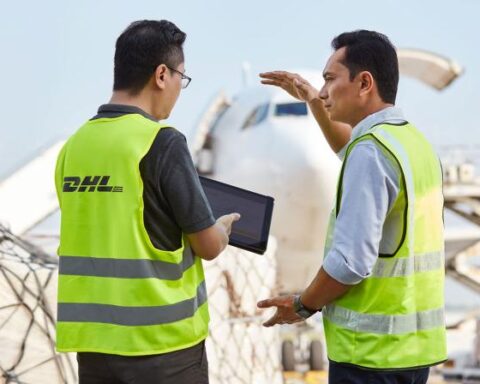Bonn,Brussels,New York – DHL and NYU Stern School of Business have published the new DHL Trade Growth Atlas, which maps the most important trends and prospects of global trade in goods. The report covers 173 countries, providing valuable business intelligence for policymakers and industry leaders. The report shines a positive light on the resilience of global trade – despite recent shocks and market pessimism.
“Our aim is for the DHL Trade Growth Atlas to become a go-to resource for understanding and navigating shifts in the global trade landscape. Trade will remain a key driver of prosperity – as it has been for centuries. In the current global business environment, DHL can help customers rethink certain supply chains, basing them on a sensible trade-off between cost and risk so that they are both efficient and secure. As the world’s leading logistics provider, we offer solutions for all logistics requirements, and have proven to provide stable and reliable services even in volatile market environments,” says John Pearson, CEO of DHL Express.
International trade is considered especially important in the present context because of its power to accelerate economic growth, reduce inflation, and enable countries and companies to access multiple sources of key inputs.
Key Take-Aways: Growth, Shifts, and Opportunities
The DHL Trade Growth Atlas also measures changes in countries’ and regions’ shares of world trade. Among the key take-aways:
- The Covid-19 pandemic has not been the major setback for global trade that many anticipated: International trade in goods has surged as high as 10% above pre-pandemic levels, even in the face of significant supply bottlenecks that constrained further growth.
- Prospects for future trade growth remain surprisingly positive: Due to the war in Ukraine, trade growth forecasts have been downgraded, but they still call for trade to grow slightly faster in 2022 and 2023 than it did over the preceding decade.
- E-commerce sales boomed during the pandemic and forecasts point to strong cross-border e-commerce growth continuing.
- New poles of trade growth are identified in Southeast and South Asia, and trade growth is expected to accelerate dramatically in Sub-Saharan Africa.
- Trade growth is spread across a wider variety of countries: China accounted for a quarter of trade growth in recent years and is predicted to continue to have the largest growth, but its share is likely to fall by half, to 13 percent.
- Viet Nam, India, and the Philippines stand out on both speed and scale of projected trade growth through 2026. All three have potential to benefit from efforts by many companies to diversify China-centric production and sourcing strategies.
- While emerging economies increased their shares of world trade from 24 to 40 percent between 2000 and 2012, with half of the increase driven by China alone, these shares have barely changed over the past decade.
- However, emerging economies continue to race forward on measures of connectivity, innovation, and leading companies. They are becoming more important exporters of sophisticated manufactured products, and increasingly compete not only on low costs, but also on innovation and quality.





